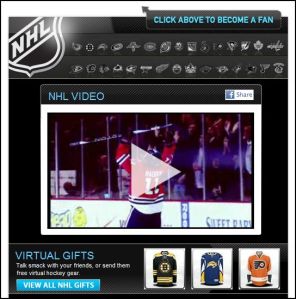 At the paidContent Mobile conference on Tuesday, NBA Digital Senior Vice President and General Manager Brian Perez announced that Apple’s iPad will begin streaming live NBA games beginning this fall. Few specifics have been released to this point, but Perez said the NBA needed to move quickly into the realm of mobile media to stay in line with fan interest.
At the paidContent Mobile conference on Tuesday, NBA Digital Senior Vice President and General Manager Brian Perez announced that Apple’s iPad will begin streaming live NBA games beginning this fall. Few specifics have been released to this point, but Perez said the NBA needed to move quickly into the realm of mobile media to stay in line with fan interest.
“This (mobile growth) is happening so quickly, we needed to test as many business models and pricepoints as possible—free app, paid app, team app—every single team across three platforms [iPhone, Android, Blackberry],” he said. “We’ve gained a lot of knowledge. So you’ll see us rationalize those platforms, create a bit more elegance and bring all that learning together. We’ll still maintain some form of team branding because people are fans of the team first.”
Though the NBA began utilizing apps to stream live games in October 2009, the league’s approach was marked by a “wide array” of of options, including packages, ala carte premiums, and lite modes (i.e. highlights, updates, scores). This fractured strategy led to confusion not only among fans, but also service providers and mobile devices. Perez’s announcement on Tuesday solidifies the league’s commitment for a fully integrated and seamless option for mobile web users and puts the NBA firmly beside both the MLB and NHL in terms of media advancement.
The announcement comes as little surprise to iPad users and the mobile world. In a time when we’ve come full circle — that is, the need for larger screens on more mobile devices — leagues are now reaping the benefits for patiently waiting out the technological wave and not fully surrendering to the handheld craze that began almost a decade ago (ESPN Mobile missed that mark). It’s only a matter of time before Apple fully integrates themselves into the linear media market, using the iPad as the next integrated remote. Olympics? World Cup? Just wait.

 Last week,
Last week, 
 The recent universal acceptance of online sports ticket brokers by both professional leagues, the NCAA, and fans has led to a substantial increase in both the number of sites and the technology associated with them. Though organizations like StubHub and Ticket Master have significant control over the market due to exclusive rights with many sports properties, other independent brokers have gained notoriety with cheaper prices, less fees, and more easily navigable layouts.
The recent universal acceptance of online sports ticket brokers by both professional leagues, the NCAA, and fans has led to a substantial increase in both the number of sites and the technology associated with them. Though organizations like StubHub and Ticket Master have significant control over the market due to exclusive rights with many sports properties, other independent brokers have gained notoriety with cheaper prices, less fees, and more easily navigable layouts.
 The iPad has officially arrived. After months of expectations, reviews, and postulations, Apple officially released the iPad to the world on Saturday and the company reports that 300,000 units were sold on the first day alone. The laptop impersonator/electronic reader/music player/movie viewer has taken the technology world by storm ever since Apple CEO Steve Jobs revealed the device nearly ten weeks ago.
The iPad has officially arrived. After months of expectations, reviews, and postulations, Apple officially released the iPad to the world on Saturday and the company reports that 300,000 units were sold on the first day alone. The laptop impersonator/electronic reader/music player/movie viewer has taken the technology world by storm ever since Apple CEO Steve Jobs revealed the device nearly ten weeks ago.